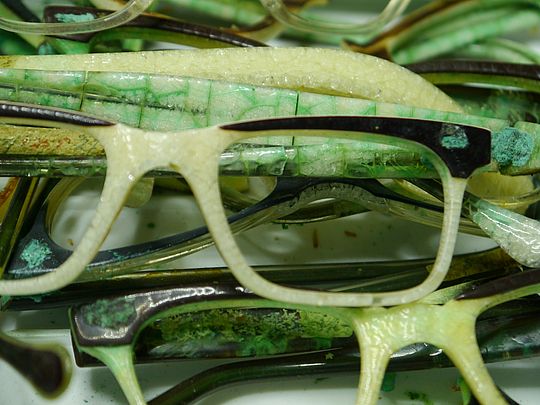![[Translate to English:] [Translate to English:]](/assets/_processed_/7/7/csm_Acrylglas_Dachelement_Inv_Nr_2768_fd8323eaab.jpg)
[Translate to English:] Photo: Bayerisches Landesamt für Denkmalpflege | Rolf Moennich
Material and Production
Towards the conservation of historic acrylics
This research project aims at developing sustainable treatments for maintaining outdoor transparent acrylic components. Preserving the materiality of plastic components is a challenge for the current maintenance and conservation-restoration treatments, which are necessary to keep the built heritage from the second half of the last century.
Content
[Translate to English:] Erhaltungsstrategien für transparentes Polymethylmethacrylat (PMMA) in Architektur und musealem Kulturgut im Außenraum
Funded by
Funded by the Deutsche Bundesstiftung Umwelt DBU
- Material and Production
- Conservation science
- Deutsches Museum - Museumsinsel
- Forschung
Edited by
Dipl. Restauratorin (Univ.) Susanne Brunner
GastwissenschaftlerInTU München
Project description
Numerous historic valuable buildings and cultural artefacts from the last century have components made of transparent acrylics. Especially cultural objects outdoors are affected by increased UV-light, pollutants, soot, graffiti and vandalism, which damage their once transparent appearance and their substance. Instead of removing and replacing their original substance, historical acrylic components belonging to valuable cultural heritage should be maintained on a regular basis to prolong their lifespan.
In contrast to the middle of the last century, when synthetic polymers were considered to be efficient, versatile and everlasting, plastics are now regarded as being problematic materials. The multitude of designs in postwar cultural heritage was enabled largely through plastic products, which are indispensable in their original substance. The plastic products represent and transmit historical values. Furthermore, they carry information about historical recipes and production techniques. For synthetic polymers like acrylics, there are as yet no approved and verified maintenance and sustainable methods as there are for more common historical materials in built heritage. A different view on plastics, not as disposable products, but as a material and cultural resource that should and can be preserved, is the basis for preserving the material heritage of modernity.




![[Translate to English:] [Translate to English:]](/assets/_processed_/e/4/csm_Play_YagouRelaunch_Bild1_bf60a9b213.jpg)


![[Translate to English:] [Translate to English:]](/assets/_processed_/6/f/csm_210528_2235_Lilienthal-Gleiter_47d1b47d12.jpg)